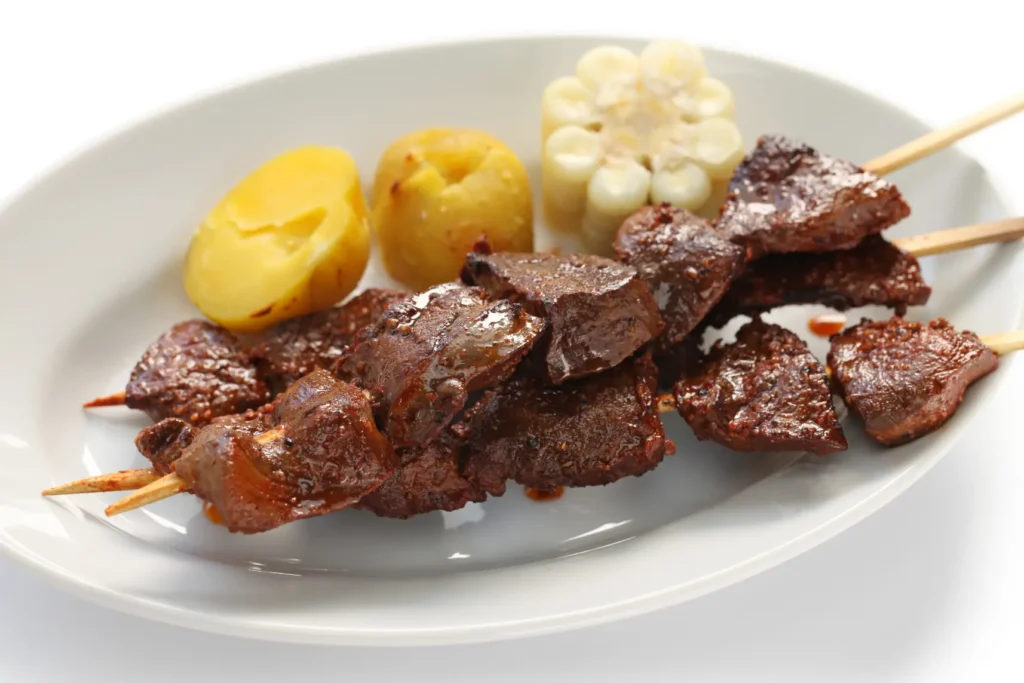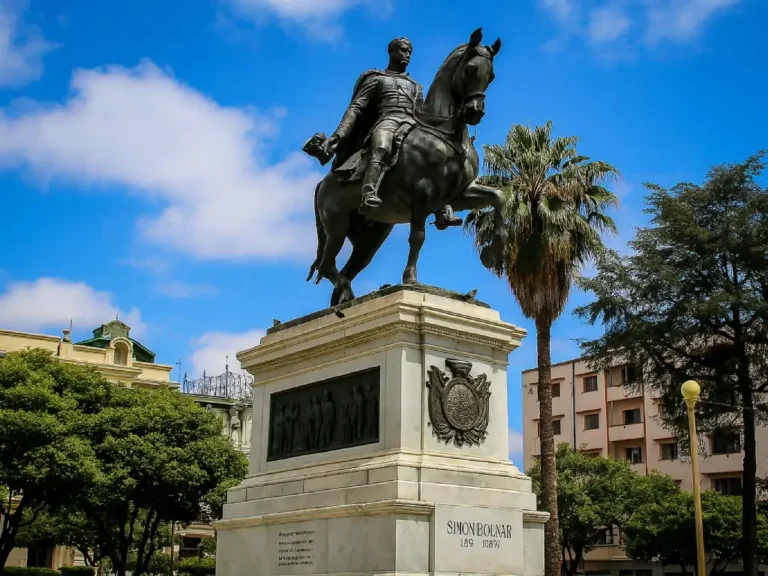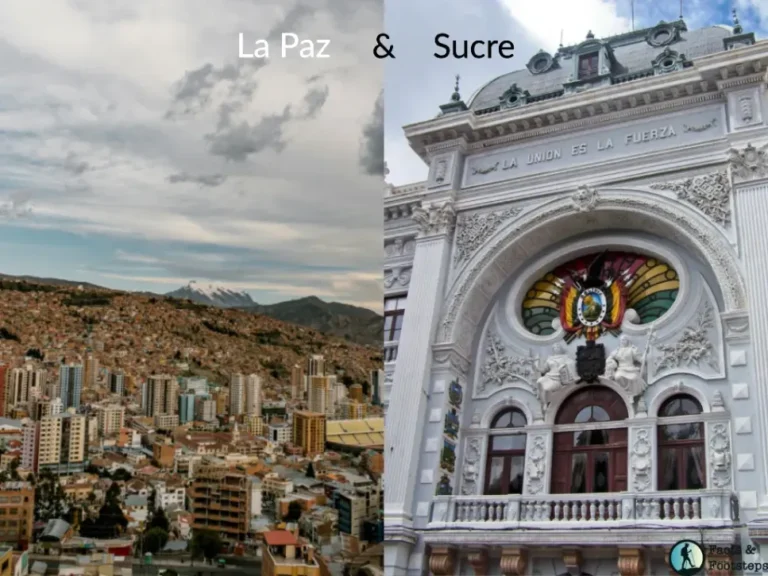Traditional Dishes Bolivia. What to Eat & Why You’ll Love It.

When it comes to proper local eats and traditional dishes, Bolivia doesn’t mess about. From street snacks to homely comfort food, there’s a serious range of flavours to get stuck into.
Let’s have a wander through some of the best traditional dishes I tried across my time there – the kind locals grow up on & travellers end up craving.
For those in a hurry I’ve also included a handy FAQ section at the end if you fancy a quick skim-read for questions I’ve heard more than once on this topic!
Salteñas – Bolivia’s Juiciest Mid-Morning Bite
The easiest way for me to explain to the uninitiated is empanadas, but with a bit of Bolivian flair. Salteñas are baked pastries filled with a mix of meat, potatoes, peas & a slightly sweet, slightly spicy sauce. The dough’s a bit sweet too, which sounds odd at first but trust me – it works.
Usually eaten mid-morning (yes, really), they’re a classic snack you’ll find just about everywhere. Pro tip: eat them slightly tilted so the filling doesn’t spill all over your top. Learned that little nugget the hard way.
Fun fact: My favourite fact is that the Salteña isn’t actually Bolivian in origin, it was created by a Bolivian woman exiled in Argentina during the 1800s who started selling them to survive.
The name “salteña” literally means “woman from Salta” (a city in Argentina – also a lovely place btw). When she returned to Bolivia, the pastry took off & became a national staple.
Silpancho – One Massive Plate of Comfort
Straight out of Cochabamba, silpancho is a bit of a unit. You’ve got rice, you’ve got fried potatoes, a thin breaded beef cutlet bigger than the plate itself & a fried egg plonked on top.
Chuck some tomato & onion salsa on there for freshness & boom – proper Bolivian comfort food. This one, like Colombia’s Bandeja Paisa, is firmly enjoyed without a calorie counter.
These meals don’t just fill you up – they speak to the everyday lives of locals, especially in rural areas – I dive into the realities in is Bolivia a poor country. It depends how you measure it.
Anticuchos – Skewers With a Bit of Heart
Literally. These grilled meat skewers are made using beef heart, marinated to high heaven & charred over coals. Served with boiled potatoes, corn & often doused in spicy peanut sauce.
Cheap, tasty & popular at night markets all over the country. Anything with intestines, stomach or heart I usually avoid, but made a special exception at the requests of my Bolivian friends, I was not disappointed!
Some locals also just snack on leftovers or grab street food like salteñas or anticuchos in the evening – both of which you’ll spot on many Bolivia tours worth booking too.

Sopa de Maní – Peanut Soup That Hits the Spot
Sounds weird, tastes brilliant. Sopa de maní is a creamy peanut soup loaded with beef, veg & potatoes. The kicker? It’s topped with crispy shoestring fries – because Bolivia understands texture.
The place where I had the best Sopa de Maní was easily in Cochabamba, where it’s a firm favourite amongst the community there. You can often find a veg version if you ask nicely too.
If you’re looking for more than just food, check out my full guide to exploring Bolivia– it covers all the regions, must-dos & quirky finds I stumbled across.
Pique a lo Macho – Spicy, Saucy, Meaty Chaos
The name translates to something like “macho snack” – which says a lot. It’s a pile-up of beef, sausage, onions, tomato, chilli & chips, often topped with sliced boiled eggs.
Spicy, messy & designed to be shared (unless you’re feeling particularly hungry that day and fancy a challenge).
It’s one of the many reasons Bolivia’s such a great shout for travellers on a budget, so if you’re wondering if Bolivia is cheap to travel, you might be surprised!
Humintas – Bolivia’s Corny Little Treats
If you like Mexican tamales, you’ll love humintas. Made from fresh ground corn, cheese & spices, wrapped in corn husks & either steamed or baked. You’ll spot them at bus stops, markets & kitchens up in the mountains. Slightly sweet, totally moreish.
You may also see them spelt as humitas or humas. I was given a couple to feast on before my Death Road Experience and was fuelled efficiently for the whole thing!
Bonus for the Veggies Out There
Humintas are one of the few traditional Bolivian dishes that are properly veggie-friendly – no meat, just corn, cheese & spice wrapped in a husk. There’s also a meat-free version of sopa de maní if you ask nicely. Just say “sin carne” when ordering – works a treat.
Chairo – Soup That’ll Warm Your Bones
This one comes from the Andes, traditionally made by the Aymara people. Chairo’s a thick, hearty soup made with lamb or beef, veg, wheat & chuño – freeze-dried potatoes that have a texture all of their own.
It’s the kind of soup you want after a cold trek in La Paz. Trust me here!
A lot of Bolivia’s most iconic meals – like chairo – are tied to Indigenous traditions. If interested to know more on the indigenous front, knowing what languages are spoken in Bolivia is a great place to start.
I found that eating it bite by bite as opposed to trying to drink it gave me the best experience, that stuff is thicker than a snicker.
Fun fact: Chuño’s been made in Bolivia for over a thousand years using a natural freeze-drying process. My Inca guide explained that locals leave potatoes out in the freezing night air, then stomp them barefoot in the morning to squeeze out the moisture. It’s one of the oldest food preservation techniques still in use!
Chajchu – Layers of Goodness
Less known outside Bolivia, but no less tasty. Chajchu layers up boiled potatoes, meat (usually beef or pork), corn, fresh cheese & a spicy sauce that ties it all together.
Sort of like a rustic Sunday dinner – simple stuff done right. I also just find the name fun to say, but I am pretty easily amused. Despite my reference, they are actually more often served at lunch, but can make a hearty dinner too!
Plenty of these dishes also show up during local festivals – food & culture go hand in hand here. Knowing a bit more about Bolivian holidays and traditions gives you a taste of what to expect.
For the Sweet-Toothed Among You
Bolivia has some top-notch desserts – think helado de canela (cinnamon ice cream), api con pastel (a spiced corn drink paired with deep-fried pastry), or little pastries stuffed with dulce de leche. They’re not as famous as the mains, but definitely worth a nibble.
FAQs About Bolivian Food (That I’ve Actually Been Asked)
Some of the most loved Bolivian dishes include salteñas, silpancho, sopa de maní, pique a lo macho & anticuchos. These show up across the country, from markets to sit-down restaurants
A main dish often includes rice, potatoes or corn with a protein like beef, chicken or llama. Dishes like silpancho, chajchu & chairo are classic examples – hearty, filling & proper satisfying
Definitely – chicken is a big part of Bolivian home cooking. Picante de pollo (spicy chicken stew) and ají de pollo (creamy, slightly spicy chicken dish) are two solid examples you’ll see on many local menus
Dinner in Bolivia tends to be lighter than lunch, often soup-based. Chairo or sopa de maní is common, along with bread or simple rice-based dishes. Some locals also just snack on leftovers or grab street food like salteñas or anticuchos in the evening
Menus vary massively by city & region, but most local “almuerzo” (set lunch) menus will include a soup starter, a hearty meat-based main & sometimes a small dessert or drink. You can usually get all that for around $2–4 USD
Final Bite
So, traditional dishes in Bolivia? Not just food – it’s a whole experience. Hearty, bold & decently satisfying – just like this nifty salteña pic below. Food played a big part in my complete Bolivian itinerary too – especially after the Death Road ride when I basically inhaled everything in sight.
Got a favourite Bolivian dish already? Or one you’re dying to try? Let me know in the comments – or contact me @facts_footsteps on Insta if you end up giving one a go on the road.







